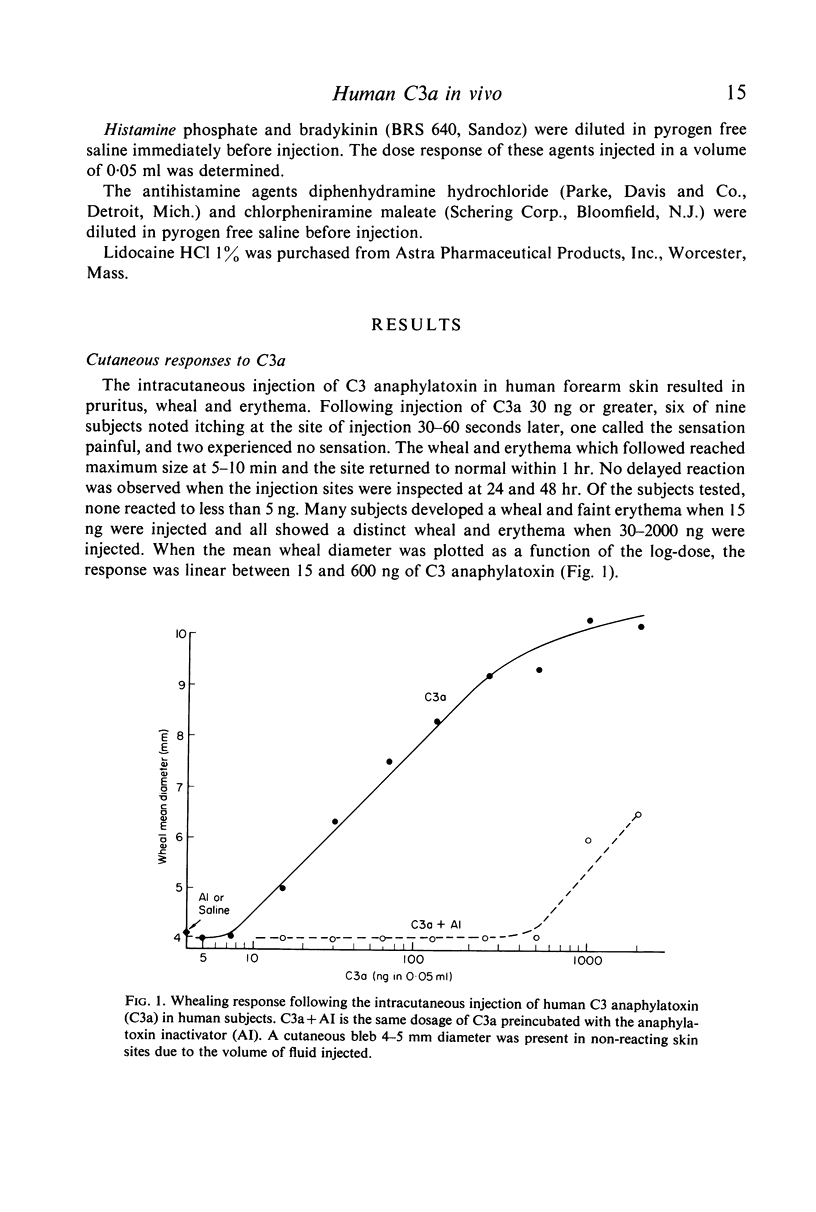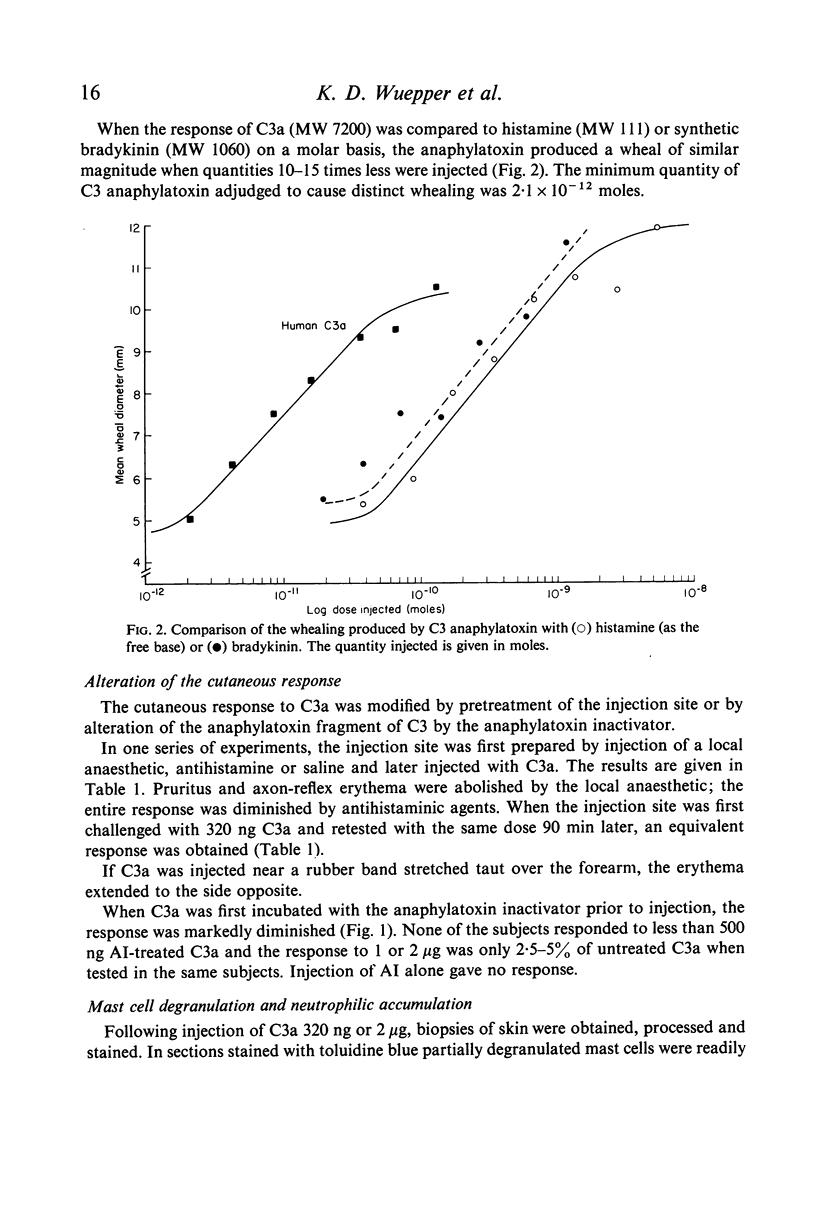Abstract
Intracutaneous injection of the low molecular weight fragment (C3a) of the third component of human complement caused pruritus, wheal and axon-reflex erythema in human skin. The response was maximal at 5–10 min after injection and dose-dependent between 15 and 600 ng. On a molar basis, C3a was more effective than histamine. The response to C3 anaphylatoxin required the release of 10 to 15 moles of histamine per mole of C3a. Biopsies of skin revealed mast cell degranulation and free metachromatic granules in sites injected with 320 or 2000 ng C3a. Margination and extravascular emigration of neutrophilic granulocytes was observed about cutaneous vessels within 10 min following injection of 2 μg of the polypeptide.
The wheal and erythema were diminished by prior injection of antihistamine agents; axon-reflex erythema was selectively abolished by local anaesthesia. After brief incubation of C3a with the serum exopeptidase, anaphylatoxin inactivator, the wheal and flare were decreased by greater than 95% and granulocyte accumulation was prevented.
Full text
PDF







Images in this article
Selected References
These references are in PubMed. This may not be the complete list of references from this article.
- Bokisch V. A., Müller-Eberhard H. J. Anaphylatoxin inactivator of human plasma: its isolation and characterization as a carboxypeptidase. J Clin Invest. 1970 Dec;49(12):2427–2436. doi: 10.1172/JCI106462. [DOI] [PMC free article] [PubMed] [Google Scholar]
- Bokisch V. A., Müller-Eberhard H. J., Cochrane C. G. Isolation of a fragment (C3a) of the third component of human complement containing anaphylatoxin and chemotactic activity and description of an anaphylatoxin inactivator of human serum. J Exp Med. 1969 May 1;129(5):1109–1130. doi: 10.1084/jem.129.5.1109. [DOI] [PMC free article] [PubMed] [Google Scholar]
- Budzko D. B., Müller-Eberhard H. Anaphylatoxin release from the third component of human complement by hydroxylamine. Science. 1969 Aug 1;165(3892):506–507. doi: 10.1126/science.165.3892.506. [DOI] [PubMed] [Google Scholar]
- Cochrane C. G., Müller-Eberhard H. J. The derivation of two distinct anaphylatoxin activities from the third and fifth components of human complement. J Exp Med. 1968 Feb 1;127(2):371–386. doi: 10.1084/jem.127.2.371. [DOI] [PMC free article] [PubMed] [Google Scholar]
- Lepow I. H., Willms-Kretschmer K., Patrick R. A., Rosen F. S. Gross and ultrastructural observations on lesions produced by intradermal injection of human C3a in man. Am J Pathol. 1970 Oct;61(1):13–23. [PMC free article] [PubMed] [Google Scholar]
- Müller-Eberhard H. J. Complement. Annu Rev Biochem. 1969;38:389–414. doi: 10.1146/annurev.bi.38.070169.002133. [DOI] [PubMed] [Google Scholar]
- da Silva W. D., Eisele J. W., Lepow I. H. Complement as a mediator of inflammation. 3. Purification of the activity with anaphylatoxin properties generated by interaction of the first four components of complement and its identification as a cleavage product of C'3. J Exp Med. 1967 Dec 1;126(6):1027–1048. doi: 10.1084/jem.126.6.1027. [DOI] [PMC free article] [PubMed] [Google Scholar]



